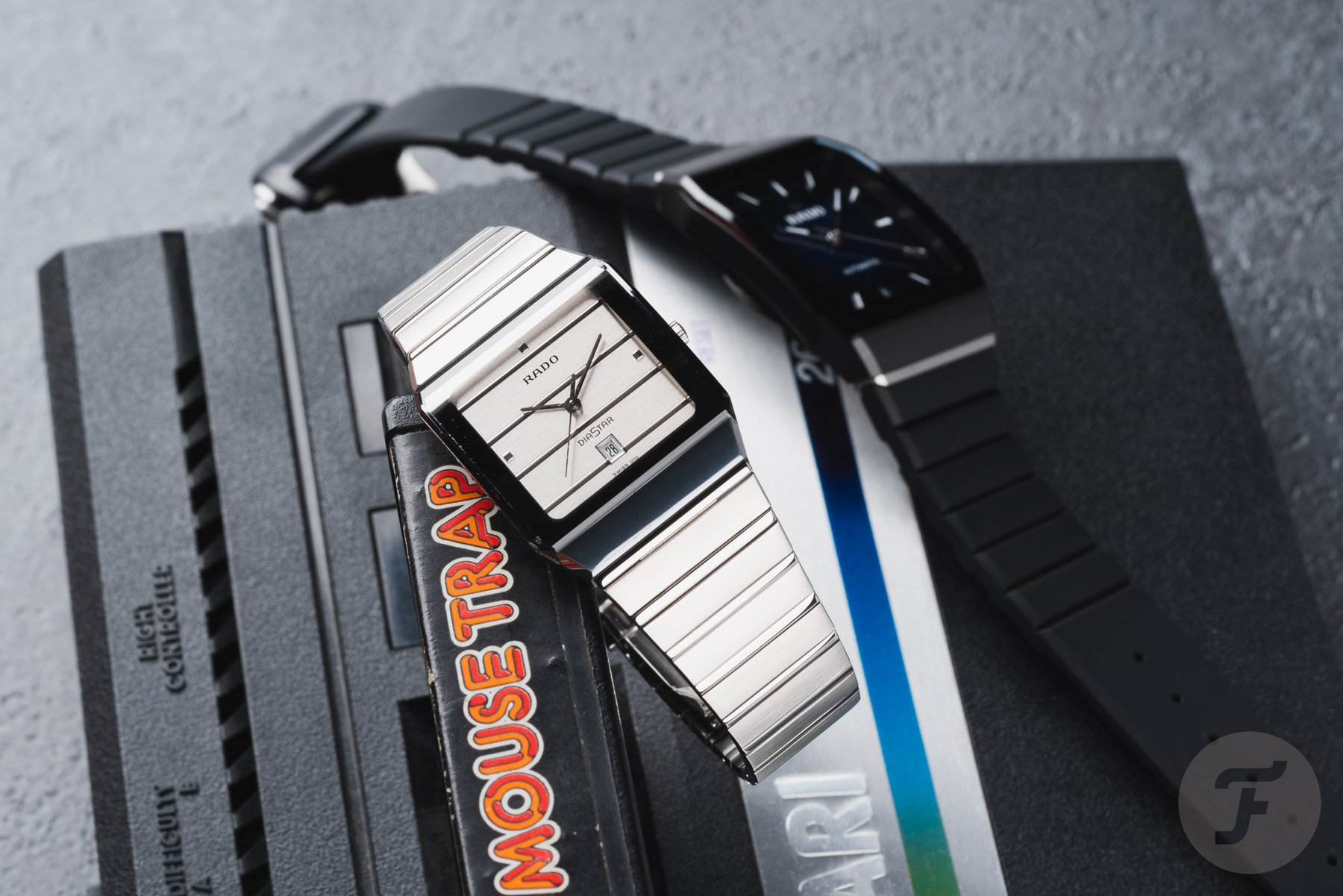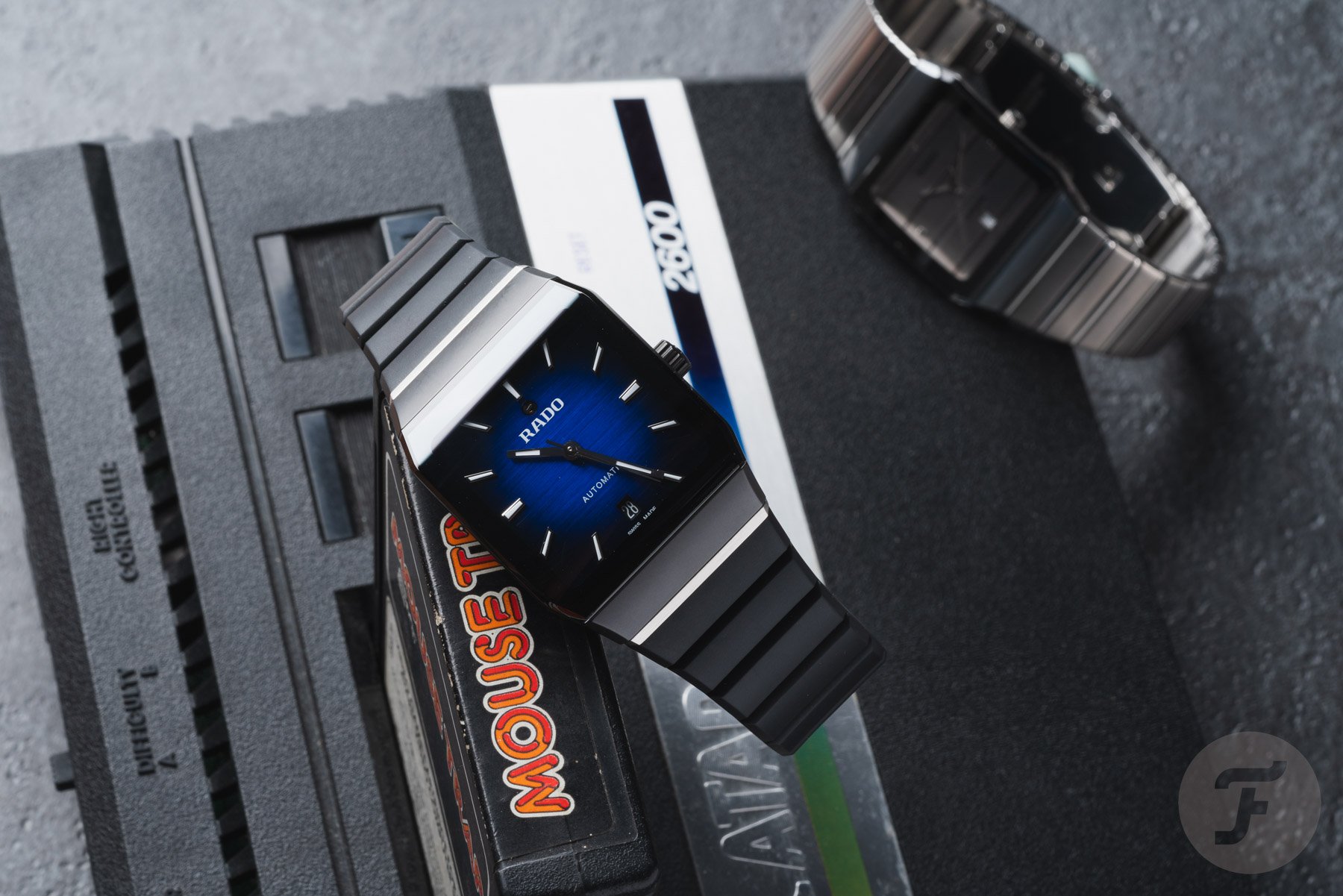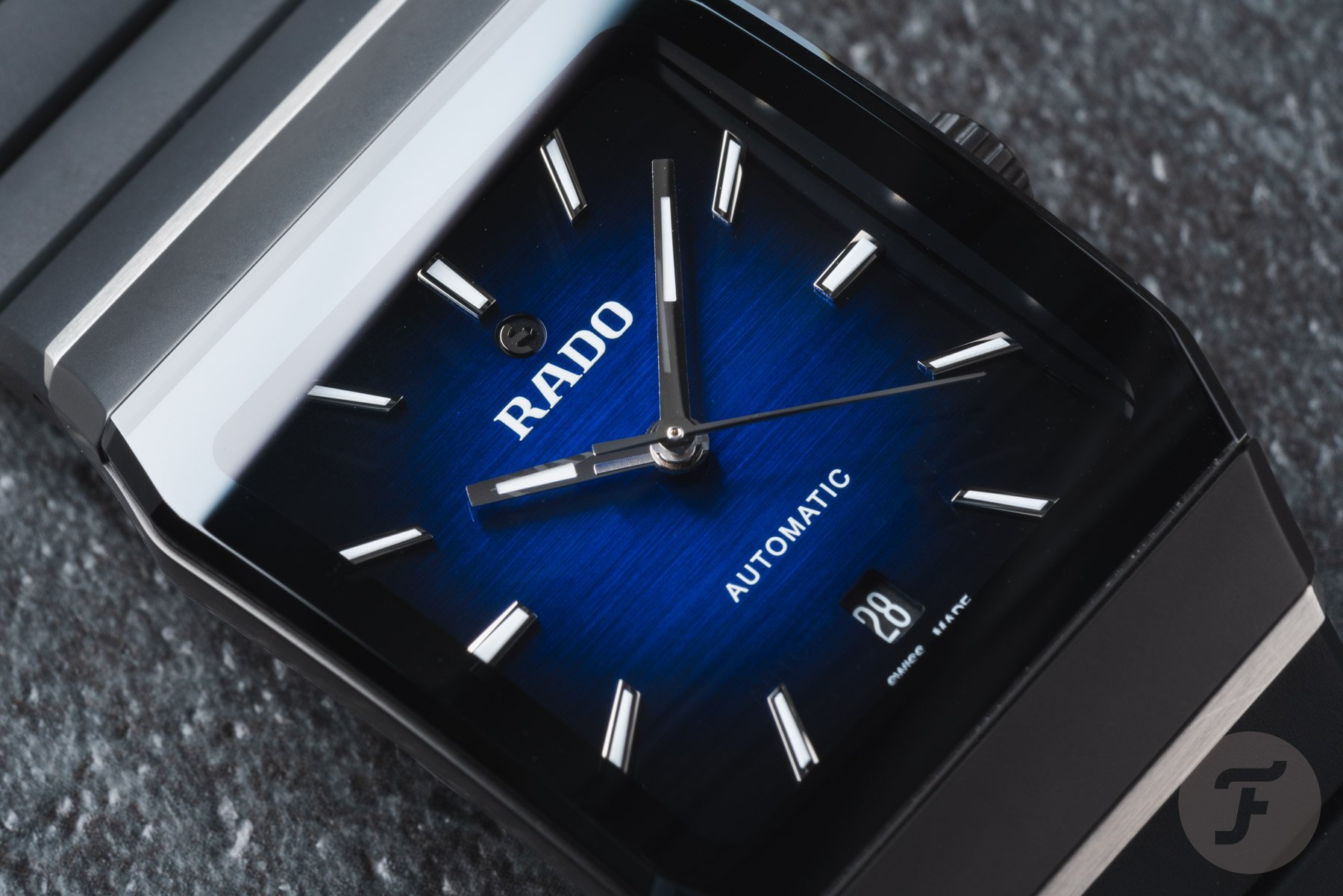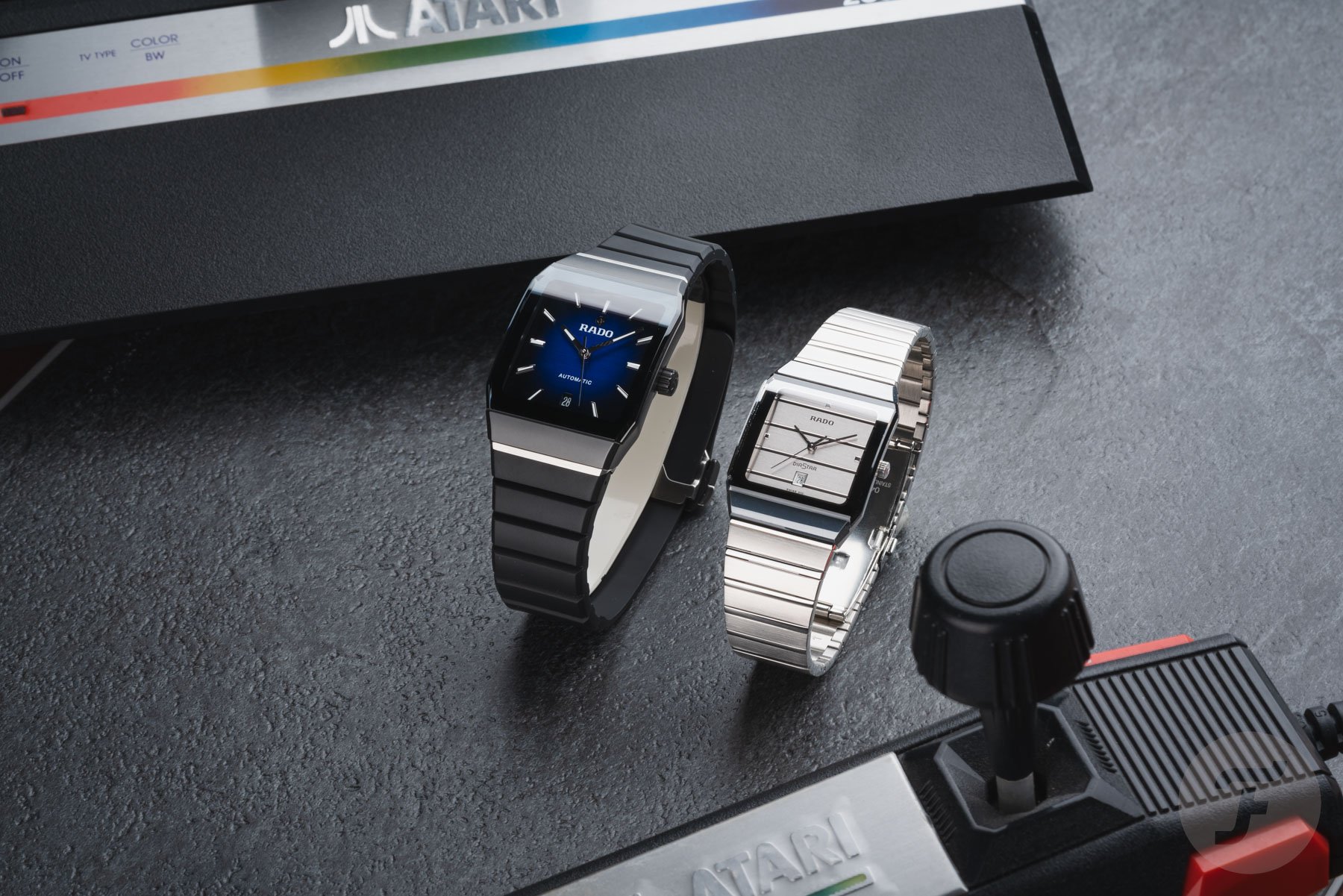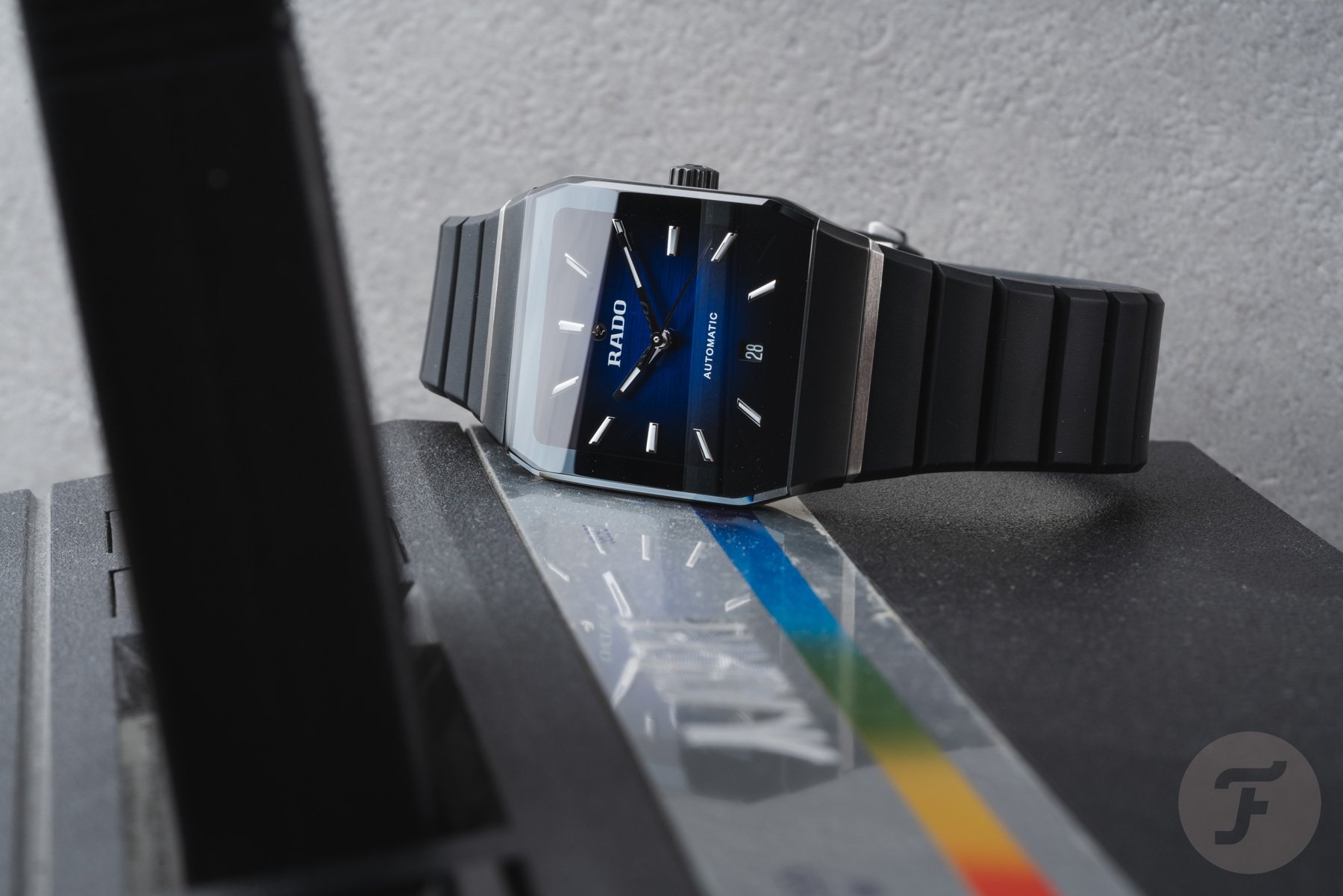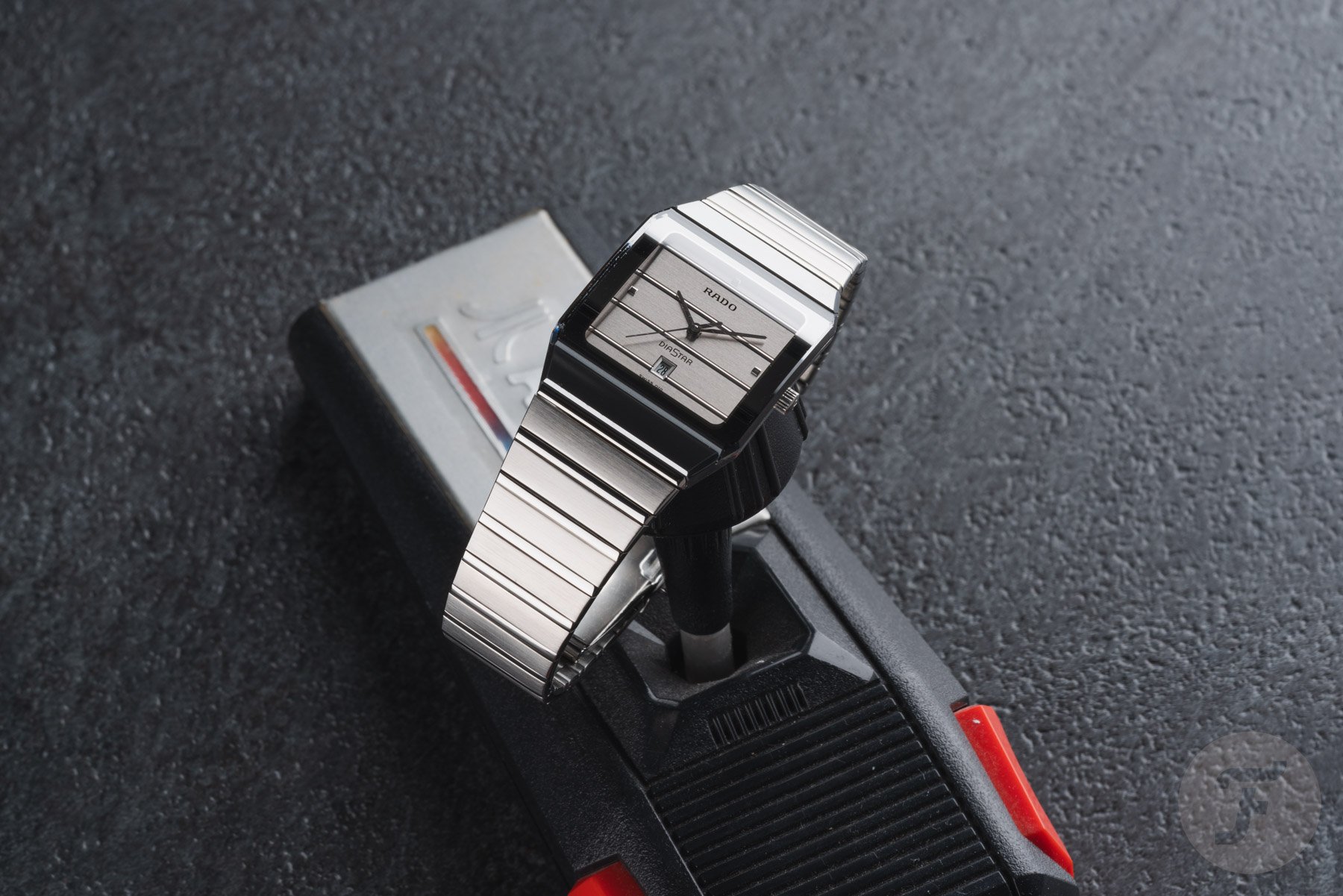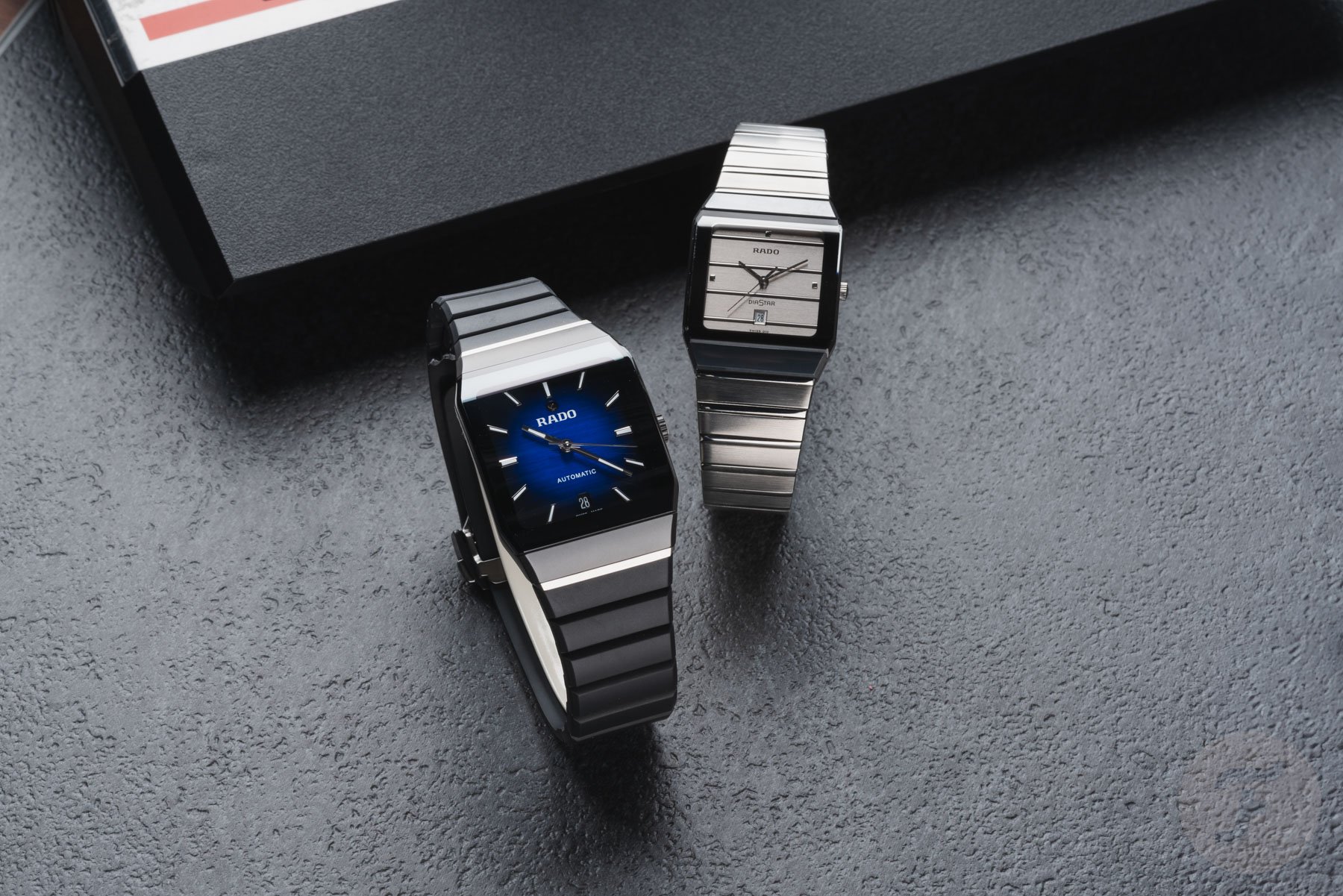Splitting The Anatom — Hands-On With The New Rado Anatom Automatic And Its Vintage Predecessor
Just over four decades after its debut, the Rado Anatom is back. It’s bigger than ever with a mechanical movement instead of a quartz one, a bezel and crown in black high-tech ceramic, and a middle case in black PVD-treated steel instead of traditional steel. The new Anatom also shows an impressive edge-to-edge sapphire crystal that follows the curve of the rectangular case. So, at least on paper, the new watch is a better product. But that’s not always how it works with watches.
It looks like an unfair “fight” when you see the new €3,750 Rado Anatom Automatic ref. R10202209 next to the 1983 Diastar Anatom ref. 152.0202.3. That’s not just because of the large differences in size. Still, size matters, so here are the dimensions of the latest Anatom — 32.5mm across, 46.3mm long, and 11.3mm thick. The original measures just 28mm wide, 35mm long, and 6.9mm thick. There’s also a weight difference, which is quite noticeable when considering the watches’ construction. The new model on a rubber strap comes in at 90 grams, while the 1980s Anatom on a steel bracelet weighs 84 grams. But despite the seemingly unfair advantage of the Anatom Automatic, the original Anatom brings tons of charm to the arena.
Rado Anatom Automatic ref. R10202209 versus its ’80s counterpart
The new Anatom Automatic is most definitely not a buffed-up version of the 1980s watch. And that, in my opinion, is a good thing. Rado took the characteristics, design, and spirit of the Diastar Anatom and then time-warped them to 2024. The shape of the new timepiece is reminiscent of the original one, but the resemblance ends there. The Anatom Automatic is a watch built to up-to-date standards using modern materials and a design that speaks to modern-day customers.
Rado uses ceramic made by the Swatch Group-owned specialist Comadur just outside Le Locle. This very scratch-resistant material makes up the crown and bezel of the Anatom Automatic. Maybe naming it a “bezel” is a bit confusing because it’s all you can see when you wear the watch. It appears more like the case itself, while the black PVD steel middle case is only visible from the back. Well, regardless of the terminology, the way the shaped sapphire crystal flows into the brushed bezel is very smooth indeed, and the steel accent between the matte ceramic and the rubber strap acts as a border marker. It’s also a visual element that keeps your eyes from wandering too far away from the smoky blue and black dial.
The reinterpreted gadroon pattern
Interestingly, Rado decided not to use a gadroon-patterned dial, which is such a dominant design feature of the 1980s Diastar Anatom. Only the aforementioned steel piece attaching the strap to the case and the strap itself mimic the original gadroons, while the dial shows horizontal brushing instead. The vintage watch shows the gadroon pattern on the dial, and it matches the bracelet, resulting in a perfectly integrated overall design. The new watch is less integrated in that sense, but especially on the wrist, everything fits perfectly together.
The curved, rectangular watch follows the contours of the wrist effortlessly, for instance. And that feature also creates visual pleasure if you’re willing to take a closer look. The convex sapphire crystal over the dial isn’t just curved but also shaped and chamfered, and it fits super snugly into the matte black ceramic bezel.
Steel versus ceramic
Releasing a watch in “ordinary” steel is out of the question for modern-day Rado. That’s why the brand used steel in combination with ceramic. The vintage Diastar Anatom sure looks like a Rado watch, but it doesn’t feel like a modern one. Still, you have to appreciate how the then-futuristic 1980s styling holds up today. It is both charming and avant-garde, and that is no mean feat.
The Anatom Automatic also tries to strike a balance between design elements that make us feel comfortable and excited about the future. The use of materials, the different shades of black, the shape, and the proportions have one foot in the now and the other one on the way to the future.
The non-historical but somehow most nostalgic feature of the Anatom Automatic is the color-gradient dial. You get to see the blue version here, but there are also references with dials transitioning from green or cognac in the center to deep black edges. Although I’m not the biggest fan of gradient dials, the deep edges blend in with the black ceramic incredibly well and create depth. The applied indexes and matching rhodium hands with luminous white highlights and a very discrete date window at 6 o’clock complete a dynamic dial.
The Anatom from the past uses a quartz movement. The new one, of course, does not. The Anatom Automatic is powered by the ETA 2892-derived caliber R766. Compared to its 4Hz base movement, this Rado-exclusive 3Hz caliber provides 30 extra hours of power reserve (72 in total) and an antimagnetic Nivachron hairspring.
Wearing the old and the new
Wearing the 1980s model is a joy in the sense that it makes you want to dress in pastel-tinted T-shirts and linen jackets. No, it doesn’t really, but it does make you feel elegant and stylish instantly. Because of its size and weight, it sits very comfortably on the wrist, and looking at it is a pleasure. The gadroon pattern on the dial embodies ’80s elegance, and the brushed and polished bracelet has jewel-like qualities. The Diastar Anatom ref. 152.0202.3 is a dress watch with electro-chic vibes. If Kraftwerk is your band, then this is your watch.
The new Anatom also works with a bit of Kraftwerk in the background, and on top of that, it can also handle Gorillaz, Daft Punk, and Aphex Twin. And when you “rock out with your Rado out,” you will enjoy the great comfort of the rubber strap with a fold-over clasp that extends when you put it on your wrist. This neat little feature also makes taking off the watch just a tad easier.
The Anatom Automatic is a watch you need to judge when you have it on the wrist. I truly believe that a picture doesn’t do it enough justice. The anatomic contours of the watch and the supple rubber strap make it easy on the wrist, and the shades of black shrink the watch visually. Indeed, just as black clothes make people look thinner, a black case makes a watch look smaller.
Choosing between the Rado Anatom Automatic and its vintage predecessor
You probably expect me to write about the agony of choice in this final section, but I won’t. You don’t have to choose between the new Anatom Automatic and its vintage ancestor. Yes, you read it correctly. You don’t have to split the Anatom, so to speak. Why? Because you can have both. The modern watch will set you back €3,750.
Now, €3,750 is a significant amount of money. It is money you will spend after considerable thought and doing a fair bit of research on Rado and the Anatom model specifically. And if you have done so, you have found out that the Diastar Anatom ref. 152.0202.3 can be had (at the time of publishing) for S$784 — that’s around €540 — from Chrono24. You can have both the original and the evolution model for a little over €4K. If you have come so far that you’re willing to spend €3,750 on your new Rado, spending a little more to complete the pair is not a crazy-risky move.
For more information on the Anatom Automatic, please pay a visit to Rado.com.

